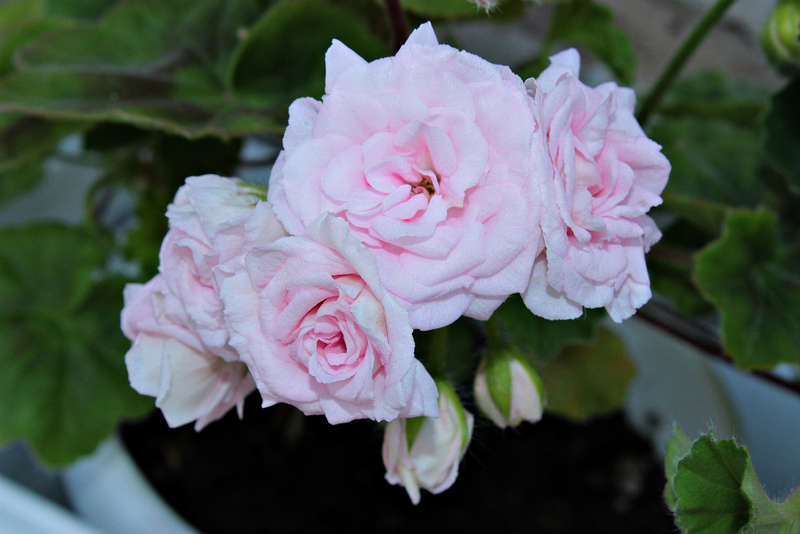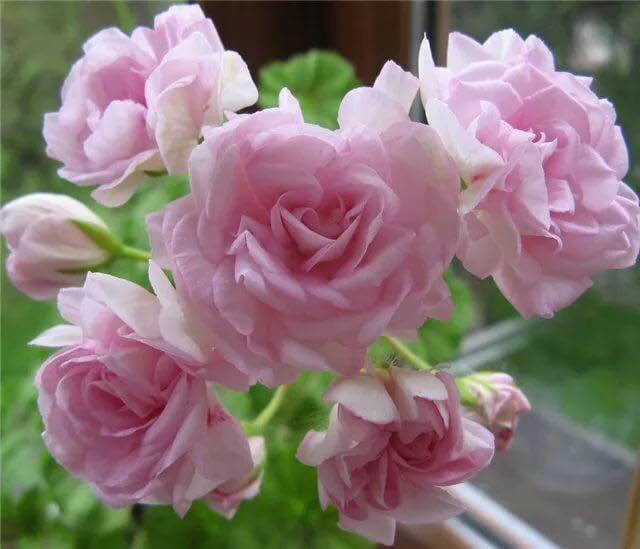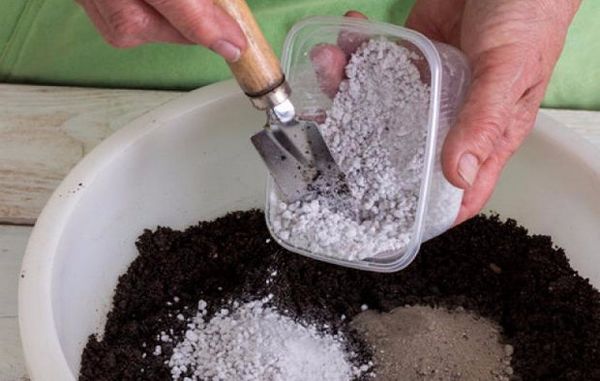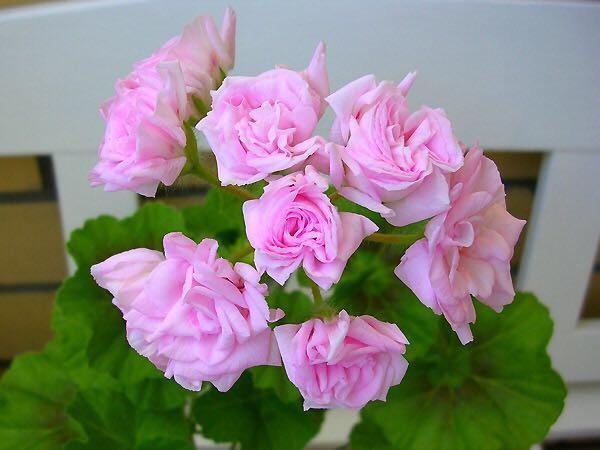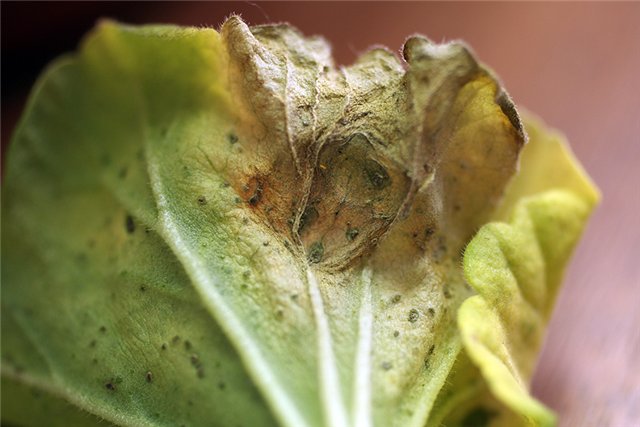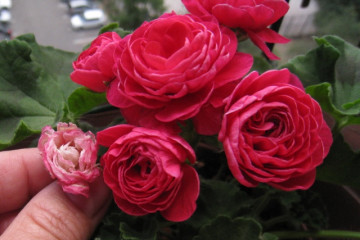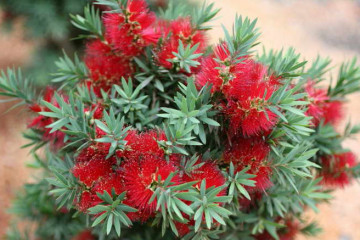Pelargonium Lady Gertrude - features of care
Content:
Lady Gertrude's Pelargonium is a popular horticultural crop that has delicate and attractive inflorescences. The plant is characterized by expressive buds that resemble roses. The culture is characterized by rapid growth and unpretentious care.
Pelargonium Lady Gertrude - what kind of flower is it, what family it belongs to
The culture was bred by European breeders. They were faced with the task of achieving flowering of the plant in summer and autumn. At the same time, scientists tried to get a new type of pelargonium of low height with unusual flowering. It took them 25 years to do this.
Ivy and hybrid varieties of geraniums were used for breeding. As a result, it was possible to obtain a geranium of the Lady Gertrude variety. It is rarely found on the market, but is often grown by experienced flower growers.
Brief description, history of origin or selection
Pelargonium Lady Gertrude is a hybrid that has many features. The plant has an underground rhizome, on which thick and thin fragments alternate. The culture is characterized by a small number of peduncles, which are gradually covered with large pink petals. As they bloom, they take on the shape of a rose.
Lady Gertrude has large decorative leaves. Moreover, the bush itself is compact in size. It tends to grow in width, but at the same time it is quite dense. Due to this, they give pelargonium any shape.
Cultivation of pelargonium Lady Gertrude, how to properly care
In order for the culture to develop normally and delight with lush flowering as long as possible, you need to carefully study the lady Gertrude pelargonium variety description and provide optimal conditions.
Illumination and temperature conditions
A flower pot is not recommended to be placed in direct sunlight, as this can cause a crop burn. It is best to put it on the east window. Phytolamps can be used if necessary.
Pelargonium can develop on the west window. The duration of daylight hours should not exceed 8 hours. In summer, it is worth observing the temperature regime at +25 ℃. For winter, an indicator of +15 ℃ is suitable. In this case, the temperature should not fall below +10 ℃. Geranium cannot withstand extreme heat. An increase in temperature parameters to +30 ℃ can lead to the death of a culture.
Watering rules and humidity
The culture needs moderate humidity. The substrate should not dry out. It is recommended not to overmoisten the soil in the pot, as this is fraught with rotting of the root system.
Water the plant as the top layer of the soil dries up. In spring and summer, the bush is watered more often and abundantly. In winter and autumn, the amount of moisture is reduced.
It is not required to spray pelargonium, it is able to accumulate moisture by itself. Drops that fall on foliage and flowers can cause unattractive streaks and even cause rotting.
Top dressing and soil quality
During the growing season, the plant needs the use of minerals. During flowering, formulations based on potassium and phosphorus are used. At the same time, nitrogenous substances are contraindicated, since they negatively affect the formation of buds.
In summer, fertilization is recommended once every 2 weeks. There is no need to feed Lady Gertrude's pelargonium in winter.
The plant does not need organic products. Florists advise using only mineral preparations. In rare cases, chicken droppings are acceptable.
Flower container size
Small containers are chosen for the plant. The pot should be 1-1.5 cm larger than the size of the earthen coma. Otherwise, the bush will actively grow roots, which will create difficulties with flowering.
Pruning and replanting
Crop the crop in the fall. During this period, the shoots are shortened by a third. This helps to activate the formation of shoots. The trimmed fragments are used for rooting.
Features of flowering plants
Pelargonium of this variety begins to bloom later than other plant species. Usually the first buds appear in mid-July. Flowering lasts until mid-autumn.
A period of activity and rest
From mid-October, pelargonium begins to prepare for a dormant period. It is preliminarily recommended to cut dry stalks and stop fertilization. In winter, the plant stores up strength for the next year. It should not be moved to a new location.
At the same time, the number of irrigations is reduced, avoiding prolonged drought. The duration of daylight hours is reduced by 1-2 hours.
In mid-spring, the flower is taken out of the dormant period. Watering is increasing. Phytolamps are used to correct lighting. At the end of spring, the culture can be transplanted and fed.
Types and shape of flowers
Pelargonium Gertrude has beautiful double inflorescences of light pink color. As it blooms, the buds look like a rose. This makes the bushes look attractive.
Flower propagation methods, when it is better to do it
Pelargonium is recommended to be propagated by cuttings. This method helps to maintain hybrid characteristics. Sometimes the seed method is also used. Most often it is used for breeding.
Propagation by cuttings
After pruning the bushes, there are usually many branches left. For cultivation, the strongest and healthiest shoots that can be rooted are chosen. It is necessary to remove the lower leaves from them.
Then the planting material is placed in water or substrate. It is permissible to add a growth stimulant to the water - root or a similar preparation. When planted in the ground, the branch is deepened by 3 cm and gently watered. Cover the plant with a glass jar from above. The appearance of new leaves on the cutting indicates its rooting.
Seed propagation
A more complex way of breeding pelargonium. Planting material is recommended to be harvested after flowering is complete, when seed bolls come to replace the flower stalks. They are plucked and the seeds are carefully poured out. Then soaked for a day in a pale solution of potassium permanganate. This will help activate growth processes.
Then the seeds are placed in geranium soil and covered with a bag or glass.Thanks to the creation of a greenhouse, it is possible to stimulate the emergence of sprouts. When the sprouts grow up to 3-4 cm, they are planted in new containers.
Growing problems, diseases and pests
With a deficiency of nutrients, the leaves of pelargonium become covered with yellow spots. If the color turns red, this indicates a lack of magnesium or too low temperature parameters.
If foliage is swollen, spider mite infestation can be suspected. If it becomes covered with spots, this indicates aphid attacks. White bloom on the leaves indicates the development of powdery mildew.
How to deal with them
Fungicides are used against fungal infections. Correction of agrotechnical measures is of no small importance. When attacks by harmful insects, insecticidal preparations are used.
Pelargonium of this variety is considered a beautiful crop, which is very popular with experienced florists. To achieve success in growing a plant, they provide it with complete and high-quality care. At the same time, it is important to water, cut, feed the bushes in a timely manner. Protection against diseases and pests is also important.
